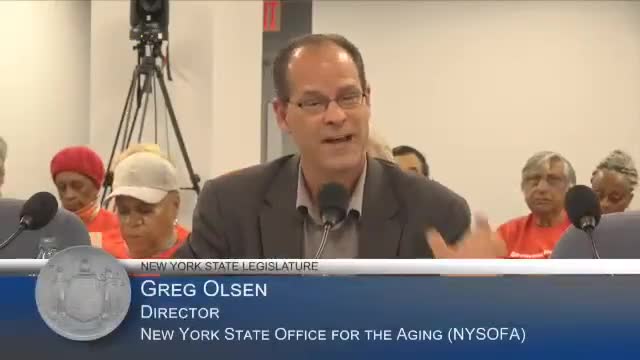Assembly debates $10M allocation for unmet elder care needs in New York
October 17, 2024 | Aging, Standing Committees, House, Legislative, New York
This article was created by AI summarizing key points discussed. AI makes mistakes, so for full details and context, please refer to the video of the full meeting. Please report any errors so we can fix them. Report an error »

The New York State Legislature held an Assembly Public Hearing on October 17, 2024, focusing on the Expanded In-Home Services for the Elderly Program (EISEP). The meeting aimed to address the pressing needs of elderly residents and the funding required to eliminate waiting lists for essential services.
The discussion began with a consensus on the importance of proactive measures to support elderly individuals, particularly those on the unmet need list. Participants emphasized that while Medicaid could provide additional services, it should not be the primary resource. The goal is to fully fund the In-Home Services for the Elderly Program and eliminate the waiting list, which currently affects many seniors.
A key point raised was the estimated funding requirement of approximately $40 million over the next two years to meet the needs of elderly clients effectively. Although the Assembly had initially allocated $40 million in the budget, only $10 million was ultimately approved. This led to discussions on how to best utilize the available funds to target older adults at risk of financial hardship.
The conversation highlighted the strategic decision to allocate funds to unmet needs rather than directly to EISEP. This approach was deemed more effective, as it allows for targeted assistance based on specific county needs rather than a broad distribution that may not address the most urgent cases. For instance, a past allocation example illustrated that a county with a significant need received far less than required when funds were distributed by formula.
Concerns were also raised regarding the distribution of the recently allocated $10 million. Questions about ensuring equitable distribution and addressing outdated needs were discussed, with assurances that the allocation process is based on current data and specific county requirements. The speaker noted that the calculations for fund distribution are straightforward, relying on reported needs and associated costs for services.
The meeting concluded with a commitment to continue advocating for increased funding and to ensure that the distribution of resources effectively meets the needs of New York's elderly population. The discussions underscored the critical nature of addressing the unmet needs of seniors and the importance of strategic funding to support their well-being.
The discussion began with a consensus on the importance of proactive measures to support elderly individuals, particularly those on the unmet need list. Participants emphasized that while Medicaid could provide additional services, it should not be the primary resource. The goal is to fully fund the In-Home Services for the Elderly Program and eliminate the waiting list, which currently affects many seniors.
A key point raised was the estimated funding requirement of approximately $40 million over the next two years to meet the needs of elderly clients effectively. Although the Assembly had initially allocated $40 million in the budget, only $10 million was ultimately approved. This led to discussions on how to best utilize the available funds to target older adults at risk of financial hardship.
The conversation highlighted the strategic decision to allocate funds to unmet needs rather than directly to EISEP. This approach was deemed more effective, as it allows for targeted assistance based on specific county needs rather than a broad distribution that may not address the most urgent cases. For instance, a past allocation example illustrated that a county with a significant need received far less than required when funds were distributed by formula.
Concerns were also raised regarding the distribution of the recently allocated $10 million. Questions about ensuring equitable distribution and addressing outdated needs were discussed, with assurances that the allocation process is based on current data and specific county requirements. The speaker noted that the calculations for fund distribution are straightforward, relying on reported needs and associated costs for services.
The meeting concluded with a commitment to continue advocating for increased funding and to ensure that the distribution of resources effectively meets the needs of New York's elderly population. The discussions underscored the critical nature of addressing the unmet needs of seniors and the importance of strategic funding to support their well-being.
View full meeting
This article is based on a recent meeting—watch the full video and explore the complete transcript for deeper insights into the discussion.
View full meeting
